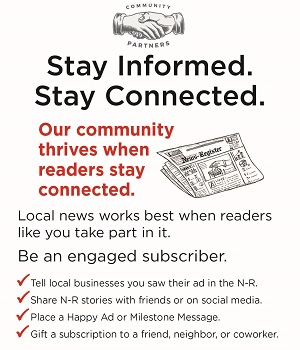Gibson: Revolutionary lab research paved way for vaccines
COVID-19 has been a nightmare of personal tragedies and economic devastation. It has given us, though, a window into one of the greatest accomplishments of medical science in this or any century — rapidly developed vaccines.
Prior to 2020, the shortest time for development of any vaccine was four years. That was the mumps vaccine produced in 1967 by Maurice Hilleman, a scientific phenom who developed more than 40 vaccines, a record not likely to ever be broken.
This year, however, multiple vaccines have come to late-stage trials for SARS-CoV-2, the virus that causes COVID-19, in less than a year. Such an accomplishment reflects extraordinary advances in multiple areas of biology, as well as bureaucratic streamlining and infusions of hordes of money.
Chinese labs quickly mapped the genome for SARS-CoV-2. After a few weeks of inexcusable Chinese delay in releasing the data, scientists around the world rapidly began designing vaccines using a variety of new techniques.
Fortunately, this virus has been more cooperative than some. The coronavirus spike protein conveniently provided an ideal target for the immune system, and vaccine development shifted into high gear.
By comparison, finding a vaccine for the Ebola virus was so complex that it required fusing an Ebola protein onto a virus that causes mouth sores in livestock. That effort took more than two decades.
New and imaginative techniques are now slashing the time from lab to clinic.
The first two vaccines to announce testing results feature messenger RNA, known as mRNA, at their core.
The code for making coronavirus spike proteins is injected directly into the body. It is taken up by cells which crank out proteins that trigger the necessary immune response.
That may sound easy, but it’s not.
In 1990, Katalin Kariko, a Hungarian researcher working at the University of Wisconsin, first proposed using mRNA to make cells produce proteins serving to prime the immune system. But she soon discovered the mRNA itself triggered the immune system, which then destroyed the messenger molecule before it could work.
Years of persistent effort by Kariko and collaborator Drew Weissman led to modified nucleic acids that still made triggering proteins, but were invisible to the immune system. It was a stunningly brilliant feat.
In 2008, two Turkish/German scientists, a husband and wife, formed a company called BioNTech to apply the Kariko/Weissman discovery to actual production of vaccines.
More hurdles remained, though. The mRNA molecule had to be transported into human cells, and that proved no easy trick.
They finally worked out a way to package the mRNA into a liposome, a lipid-membrane sphere that fuses with human cell membranes, inserting the mRNA into the cell. From there, the cell’s own machinery produces spike proteins that alert the immune system.
This technology is a game changer. As soon as the viral genetic code of a newly discovered virus is sequenced, an mRNA vaccine can be designed within weeks, not months or decades, so long as an appropriate viral protein is identified.
These mRNA vaccines have several advantages.
Since they are not full viruses, there is no chance that a person with a weakened immune system could get the disease from the vaccine, as with “attenuated” vaccines using weakened organisms. In addition, the mRNA vaccines produced so far provide a high level of protection.
In addition, mRNA may be useful in triggering the body to fight cancers as well as infectious agents. We are only beginning to learn what this technology may be capable of.
One disadvantage is the need for refrigeration, because mRNA is an ephemeral molecule, doing its job then breaking down. If it isn't kept very cold, it self-destructs.
A different technology was used to produce the Astra Zeneca vaccine. This vaccine was made by adding the spike protein DNA code to the genome of a modified chimpanzee cold virus.
The virus, harmless to humans, inserts the code for the spike protein into human cells. Our own cells then manufacture spike proteins, prompting an immune response.
One important advantage of the Astra Zeneca vaccine is its stability without deep refrigeration. That makes it ideal for doctor’s office, rural locations and developing nations.
This technology of hijacking benign viruses to create immunity has exploded in recent years. Some of these may be administered orally or by nasal spray, forming protection on the surfaces where pathogens gain access to the body.
We are incredibly fortunate to live in a time when diligent researchers are discovering safer and more effective ways to prime our immune systems to protect us. We have remarkable new tools that shield us from lethal diseases.
But we all need to cooperate for them to work. And sadly, in spite of these extraordinary advances, many people remain hesitant about vaccines.
We’ll need a persuasion campaign to make people comfortable rolling up their sleeves. Behavioral science has taught us that peer cues, like “I Got the Shot” buttons and social media posts, boost confidence for people on the margin.
Mandates have also been shown to increase acceptance. If students and healthcare workers must be vaccinated to return to school or work, others in society are more likely to follow.
It’s also possible theater or restaurant patrons may be asked to show proof of vaccination before entering, another incentive to get the shot.
The last hurdle could be the follow-through, as most vaccines appear to require two doses given weeks apart. It’s easy to feel you’ve done your part when you get that first shot.
It may take reminders to cajole folks to get that second dose. Be prepared for your clinic or pharmacy to pester you.
Without vaccines, we would still be living with the scourge of smallpox, polio and diphtheria. We should celebrate the heroic scientists who have leveraged the miracle of immunity to make many diseases preventable.
Getting vaccinated is true patriotism. Like wearing masks, it is an act we do for our ourselves, our neighbors and our country at the cost of minor personal discomfort.
This is a small price to pay to keep each other safe and restore our country to the vibrant, connected land we treasure.













Comments